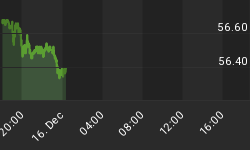The short version of the Long Wave story is that we're emotional creatures with limited memories. For as long as there have been markets we've been passing through the same sequence of mental states, beginning with anxious conservatism in the aftermath of hard times, followed by cautious optimism and finally, as the original "depression-era" generation is replaced by their clueless grandkids, let-it-all-hang-out financial excess. A horrendous debt-driven crash then resets the cycle.
There are several variations of Long Wave theory, but the most famous is based on the work of Nicolai Kondratieff, a Russian economist who gave the various stages seasonal names, with summer and autumn denoting the peak of financial speculation and winter the aftermath of the resulting crash.
The most recent cycle began after World War II and lasted until the tech stock crash of 2000, which means according to this theory we've already spent a decade in Kondratieff Winter. But the headline statistics published by the US and other major governments tell a different story, in which we have an anemic economy but not a depression.

What happened? This time around the world's central banks have a new set of tools. In past cycles money was mostly gold and silver, which is to say it was real and in limited supply. Credit might have been flexible because of fractional reserve banking, but the money at the base of the financial system couldn't be created out of thin air. Today, in contrast, it can. Since the US broke the final link between national currencies and gold in 1971, everyone has been running fiat currencies that can be created in infinite quantities and depend for their value on the trust we place in the competence and honesty of our leaders.
The fact that trust dies only slowly (at first) has given the world's governments an effectively unlimited credit card that they can max out to keep the debt implosion at bay. And that's what they've done since 2000, with ever-lower interest rates and ever-more-creative asset purchase plans. The result is a global economy that continues to grows -- when measured by the same governments that are printing the money -- and an electorate that still hopes for a solution in the run-up to each election.
But the debt is still out there, and is in fact growing as unfunded liabilities and derivatives and other exotica continue to pile up. So the Long Wave's pressure on the global financial system is getting stronger. The past year proves that if taken off of central bank life support, the European, American and Japanese economies will implode.
Over the past couple of weeks the European and US central banks have accepted this reality and announced open-ended asset purchase plans, implying that zero interest rates and unrestrained money printing will go on for as long as the markets keep accepting fiat currency.
Does this mean the contest is over and the printing press has won? No, but it means that the analytical framework has to shift from linear to non-linear systems. Jim Rickards devotes a chapter in his book Currency Wars to the idea that a financial market is more like a weather front than a car engine, in that the various parts of the former communicate with each other and change in response to that communication. This gives a complex system some unique characteristics, the most notable of which is that as its size and complexity increases, its propensity for catastrophic failure grows exponentially. Double the size of a financial system and its chance of coming undone rises by ten times or more.
By going all-in, the major central banks are committing to a progressive increase in the complexity of global financial markets. As more individuals and pension funds abandon cash and safe-but-low-yielding paper for higher-yielding but more-volatile stocks and junk bonds, the system grows ever-more fragile, making a crash both likely and more destructive.
Another trait of complex systems is that the timing of their catastrophic failure is unpredictable. Once the conditions are in place the system can collapse immediately or continue on for a long time. Rickards' analogy is a mountainside where snow accumulates until a single snowflake sets off an avalanche. But there's no way to know which snowflake will be the one, or when it will fall.
So here we are. The conditions for a global catastrophic failure are in place. Snow (in the form of trillions of new dollars and euros) is falling. There's no way to know which dollar (or which external event) will start the avalanche, but without doubt something will.
The nature of the avalanche is still to be determined, though. Will it be a wholesale loss of confidence in the dollar, euro and yen which manifests as hyperinflation, followed by a crash? Or will the bond markets at long last figure out they're being conned and push interest rates up in a spasm that's too fast and wide-spread for central banks to counter, sending us back to the 1930s in matter of weeks? We can't know the answer, any more than we can know whether then next tropical depression will turn into a Cat 5 hurricane. We can only watch it happen and prepare for the most obvious risks
















